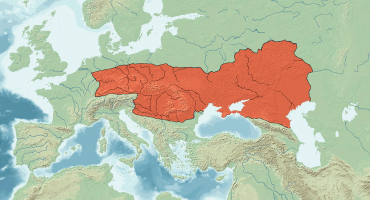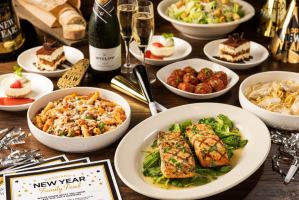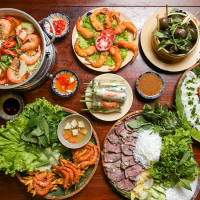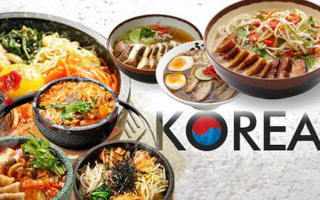Top 10 American Chain Restaurants You Just Can't Find Anymore
National restaurant franchises that were once widely spread across the American landscape have all but disappeared. Sometimes the remarkable structures they ... read more...formerly occupied continue to exist and now house new enterprises. Others have had their once-busy locations demolished, replaced with a branch of a different chain, or some other form of commercial activity. Here are ten once-popular and lucrative national businesses that have since faded away, but fans may still find them remembered in novels, movies, and websites.
-
Burger Chef produced a double stack hamburger dubbed the Big Shef before McDonald's introduced the Big Mac. They also offered the quarter-pound Super Shef hamburger before McDonald's did. Burger Chef had a toppings bar, known as the Works Bar, letting customers create their sandwiches as they saw fit before Burger King guaranteed that customers could have it their way. They also developed the "Fun Meal," a meal for kids that arrived in a cardboard box and included a small toy in addition to the food.
Burger Chef had a supporting cast that featured a magician named Burgerini, a vampire named Count Fangburger, and a witch named Cackleburger before Ronald McDonald made an appearance. Burger Chef and Jeff were the main animated characters. When McDonald's debuted its Happy Meal in 1979 and adopted corresponding characters, Burger Chef sued the company but ultimately lost. Burger Chef restaurants served flame-broiled hamburgers; in 1973, a salad bar was added; and in 1978, nine distinct kid-friendly Fun Meals with Star Wars themes were made available.
Burger Chef, which was established in 1954, had well over 1,000 locations when it reached its zenith in 1973. It was purchased by General Foods in 1968. After 14 years, General Foods sold the franchise to Imasco, a Canadian business that also controlled Hardee's, a rival chain. Imasco gradually closed the remaining Burger Chef outlets while rebranding the majority as Hardee's. Hardee's temporarily marketed the Super Shef or Big Shef three times in the twenty-first century, particularly in the Midwest, and made mention of Burger Chef in supporting advertising. In 1996, the final Burger Chef location shut its doors.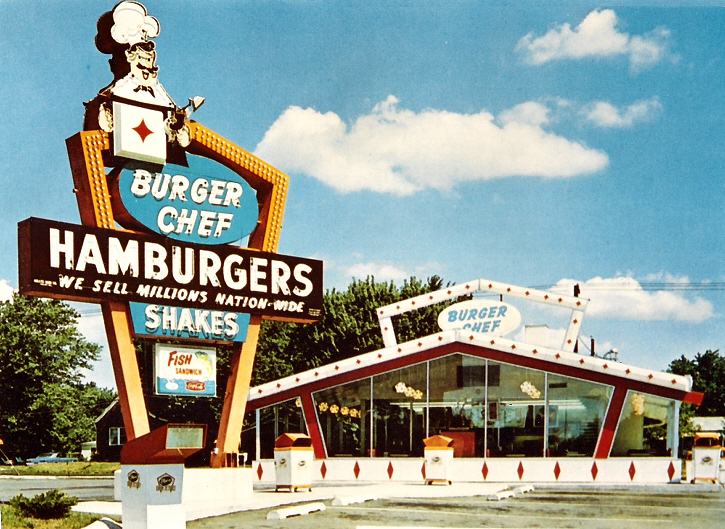
http://jsfburgerchef.homestead.com 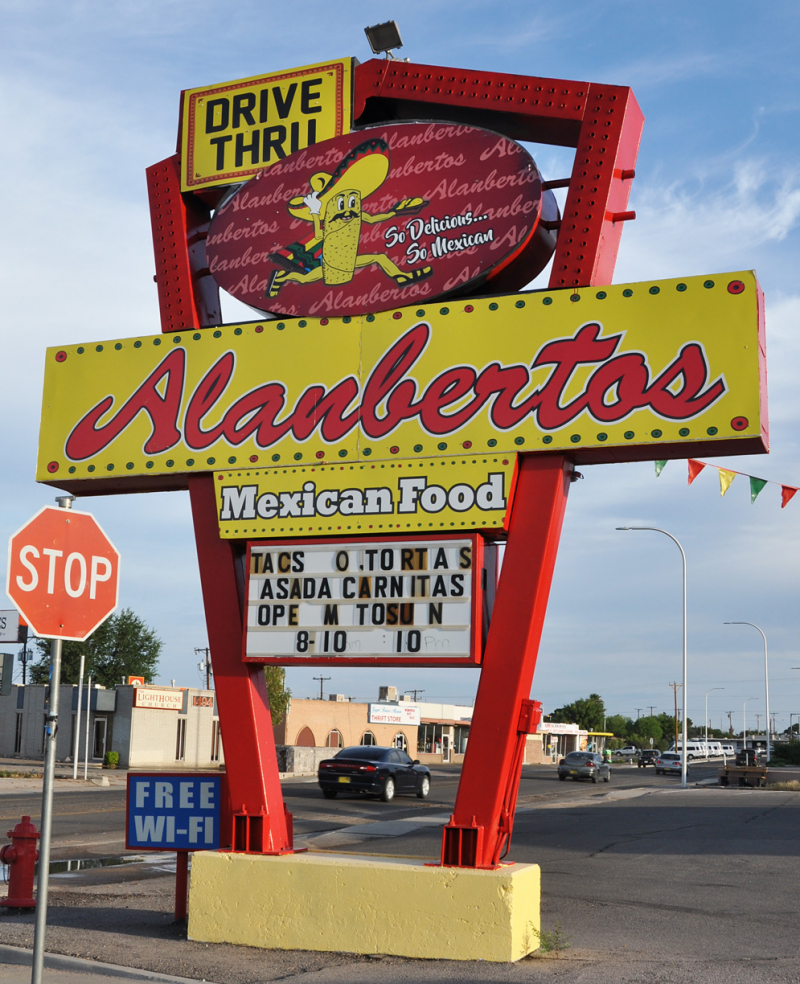
http://www.roadarch.com/ -
There are still Kenny Rogers Roasters, although none can be located in the US. The chain, which was established in America in 1991, struggled to maintain its competitiveness despite appearing in a classic Seinfeld episode. The business was started by John Y. Brown and singer Kenny Rogers, but by 1998 the company's financial status was unstable, and it filed for bankruptcy. It had 90 franchises by that point, 40 of which were in the US.
At 1998, Nathan's Famous bought the chain out of bankruptcy and as a condition of the sale, it was granted the ability to sell products with the Kenny Rogers Roasters name in its retail locations. 2008 saw the sale of the franchise to an Asian franchisee in Malaysia. On certain North American locations, including as their flagship store in Coney Island, New York, they still have the right to sell Kenny Rogers Roasters products.
The final Kenny Rogers Roasters in North America shut its doors in 2011. The chain kept running in the Philippines, Malaysia, and Asia. It also has a facility in Dubai that was inaugurated in 2015. Nevertheless, despite the free publicity that the company received from its Seinfeld episode, it never really took off in the US.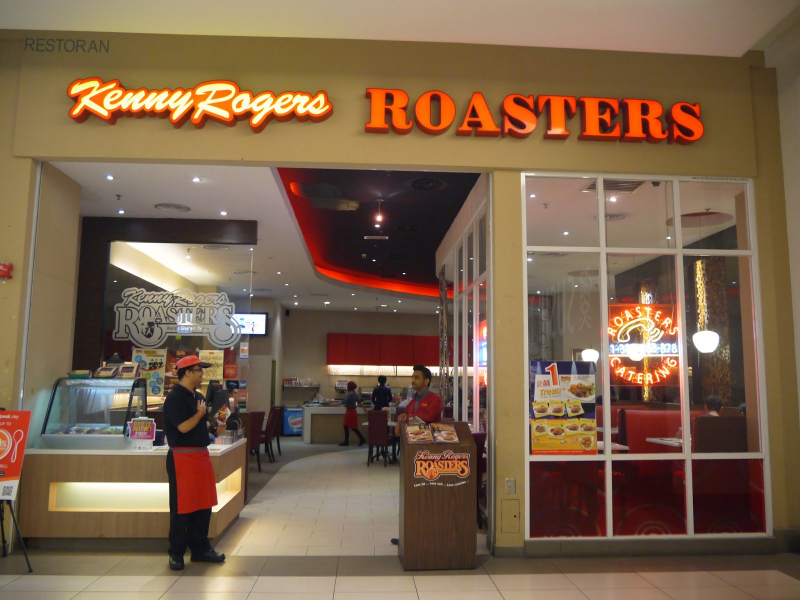
http://jacyntacsy.blogspot.com 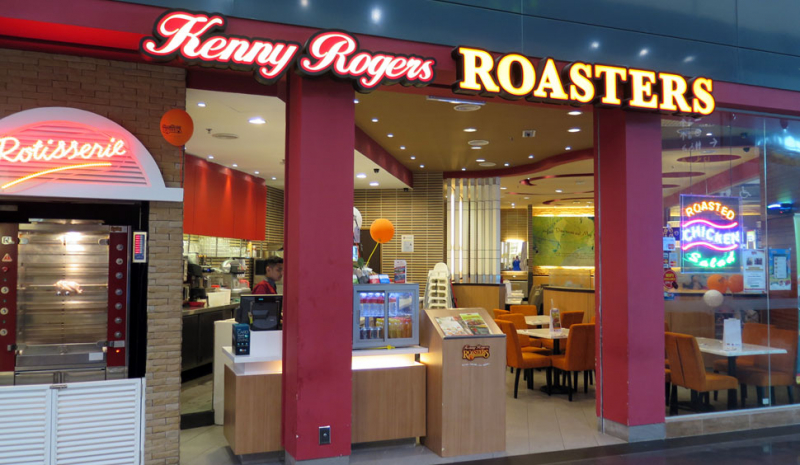
http://www.klia2.info/ -
In 1927, Bresler's 33 Flavors opened as a single ice cream shop. William Bresler, a Polish immigrant, founded the company. Over the next six decades, it grew, reaching a peak of 300 stores, 297 of which were owned by franchisees, in 1985, the year of Bresler's passing. Henry's Hamburgers, a related fast food restaurant brand, opened its doors in 1954. Before going into a period of decline in the late 1970s, Henry's had grown to more than 200 locations. Part of this collapse was brought on by the company's inability to update its menu to reflect industry changes brought about by big-name chains like McDonald's and Burger King. There is now just one restaurant.
Bresler's, though, kept growing. In order to compete with new trends, Oberweis considerably modified its products, including adding frozen yogurt to its selection. Bresler's Ice Cream had to be adjusted as a result of the modifications.
In the end, Coolbrands, a conglomerate that also acquired ICBIY (I Can't Believe It's Yogurt), Yogen Fruz, and countless other brands in the ice cream and frozen dessert sector, bought Bresler's Ice Cream. Beginning in the early 2000s, Bresler's Ice Cream stores underwent a rebranding, and by 2007, the Bresler's Ice Cream chain was no longer in operation.CBS Miami channel on Youtube -
In 1921, White Castle opened for business. As the White Castle chain grew over the following few years, Tom and John Saxe visited a number of locations to observe how they operated, the areas in which they were constructed, and the popularity of various menu options. In Milwaukee, Wisconsin, they established the first White Tower Hamburgers restaurant in 1926. The color white was chosen for the structure because it is associated with cleanliness and sanitation. They nicknamed their waiters "Towerettes" and outfitted them in white nurses' uniforms to further the impression.
Black Tower Large urban areas were the focus of Hamburgers' expansion, and they tried to locate their eateries as close to commuter hotspots like bus stops, train stations, and subways as they could. They frequently stood close to the original White Castle and both sold hamburgers for 5 cents. The two businesses started suing one another in 1928. The chain continued to operate and grow even after a United States Court of Appeals determined that White Tower had intentionally plagiarized White Castle. The two rival businesses were compelled by that 1934 court ruling to steer clear of each other's areas.
The network started to deteriorate in the 1950s, in part because cars displaced buses and railroads as a mode of transportation, putting many of its eateries in deteriorating metropolitan neighborhoods. The network began a slow but steady collapse from its height of roughly 230 outlets, and by the middle of the 1980s there were only a few left.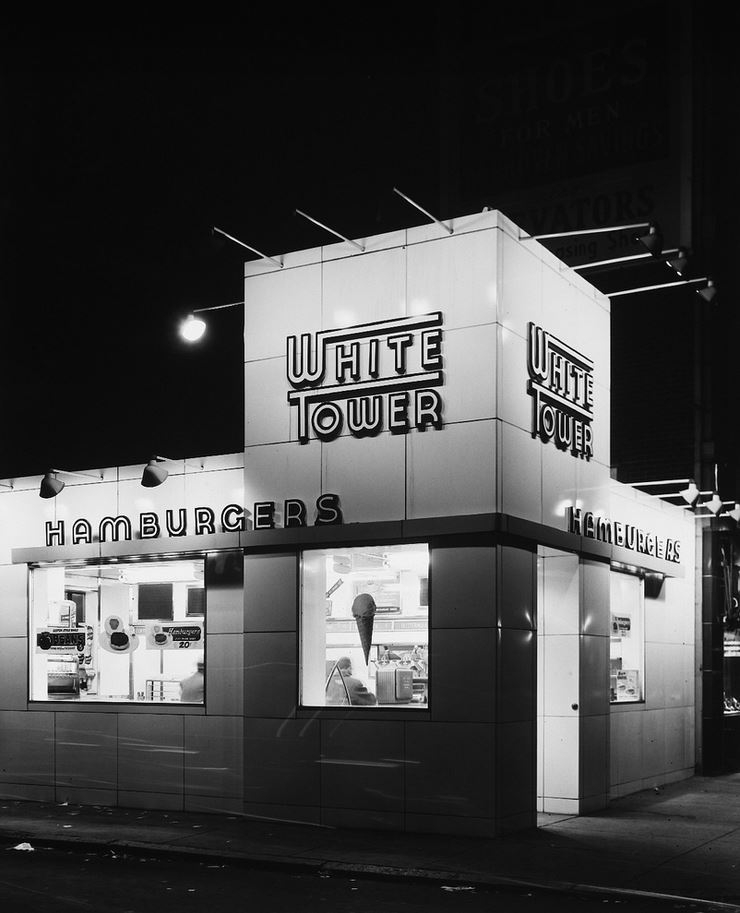
https://yesterdaysprint.tumblr.com 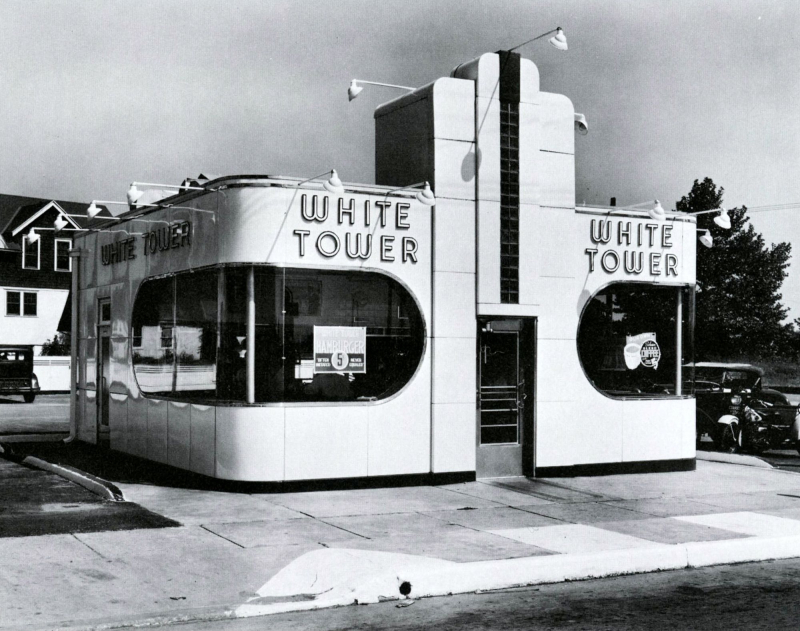
https://www.pinterest.com/ -
The fast food sector experienced a boom in the late 1950s and early 1960s with the construction of the Interstate Highway System. Amazingly frequently, new chains appeared. Red Barn was one of them, and the first of them opened in 1961 in Springfield, Ohio, in the American Midwest. Red Barns operated out of a glass-fronted, patented barn-shaped building without any internal seating but with typically available outdoor tables.
They used the animated characters Hamburger Hungry, Chicken Hungry, and Fish Hungry to market to children. It was one of the first fast food franchises to provide a salad bar, and later outlets featured some indoor seating. Red Barn quickly grew, eventually having over 400 sites across the US, Canada, and even Australia. In the end, City Investing became the owner of the lucrative franchise after purchasing the chain to obtain the land on which the restaurants were built. They started liquidating the chain instead of trying to grow it further.
When franchise agreements expired, company-owned stores were promptly shuttered and not renewed. As franchisees gradually shut their doors, the business shrank. Although many of the buildings housed different businesses for many years, the chain was disappeared by the early 1980s. Even though a number of franchisees tried to maintain the Red Barn concept with eateries dubbed The Farm, that idea lacked much appeal, and by 2015 just one survived, in Racine, Wisconsin. By 2022, it had also shut down.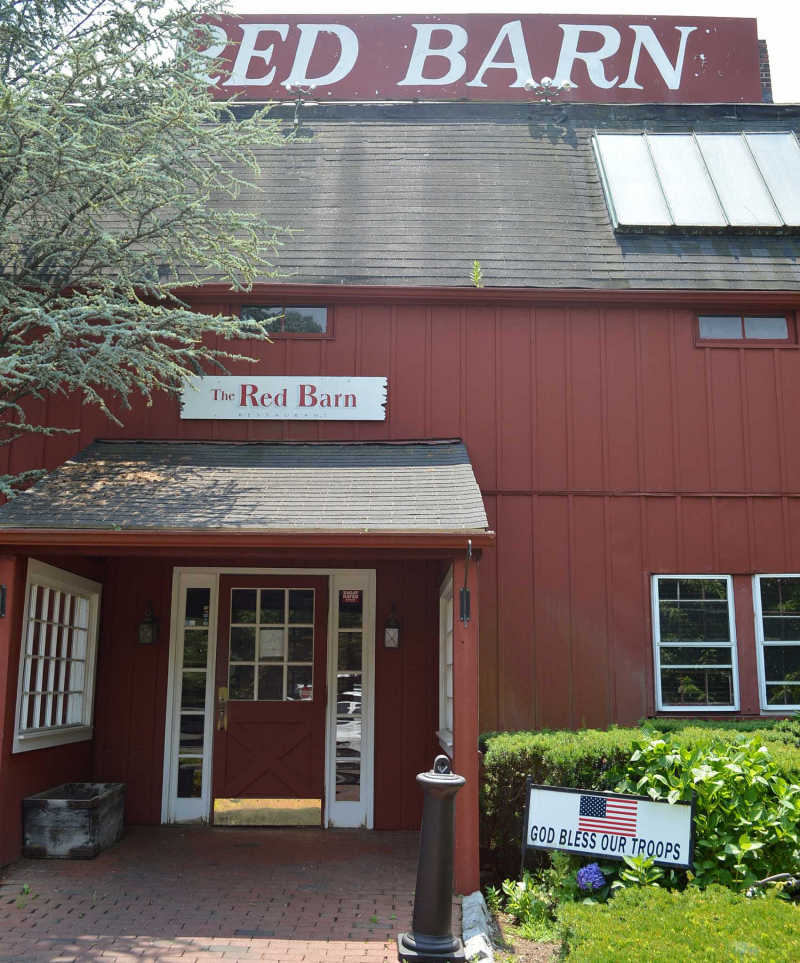
https://www.ctpost.com 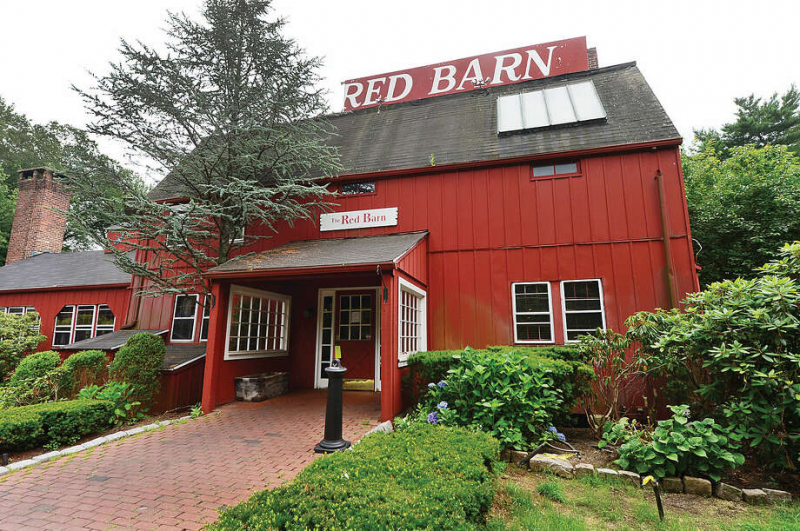
http://www.thehour.com -
Florida's Perlman brothers proudly offered hot dogs cooked in beer on their menu when they opened a restaurant on Miami Beach in the middle of the 1950s. They gave their eatery the name Lum's, and it became popular right away. Early in the 1970s, the featured hot dog cost 35 cents, but for an extra nickel, customers could add sherry-flavored sauerkraut. Lum's had already been listed on the NYSE by that point.
The Lum's chain was sold to Kentucky Fried Chicken, which was then controlled by John Y. Brown, who would later become governor of Kentucky, in 1969 after the Perlman family bought Caesar's Palace in Las Vegas. Under Brown's leadership, Lum's dropped from its peak of 450 outlets in the early 1970s, while Kentucky Fried Chicken expanded rapidly, notably overseas. Lum's offered a wide selection of imported beers in the early 1970s, which was unusual for American restaurants at the time, especially casual eating establishments.
The business was replaced by a Swiss chain called Wienerwald as a result of the imported beer. By 1978, not many Lum's restaurants were still operating as the slump persisted. With the exception of one in Bellevue, Nebraska, the few surviving Lum's stores shuttered after the company filed for bankruptcy in 1982. Up until its demise in 2017, that establishment continued to operate under the Lum's name and serve hot dogs steamed in beer.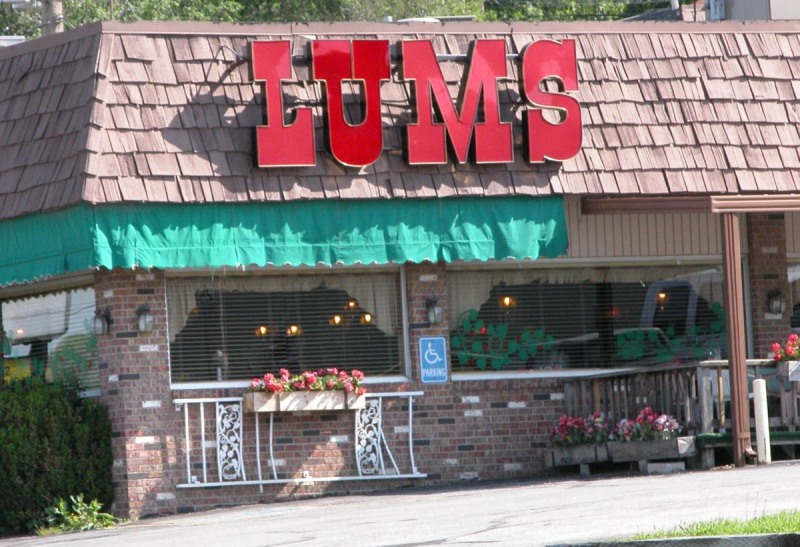
http://www.omaha.com/ 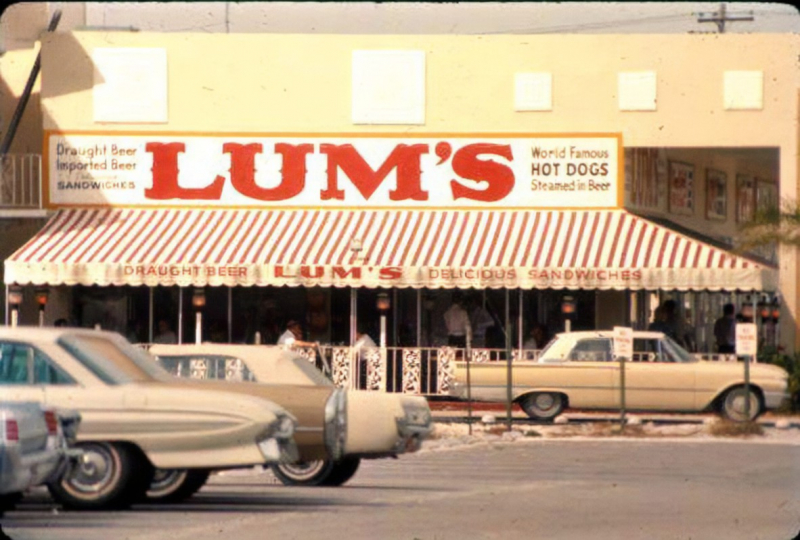
http://www.urbanghostsmedia.com -
A series of quaint breakfast-focused eateries first appeared in the South and Midwest in the 1920s. The chain had identical little structures with towering blue roofs that appeared to be made of white painted masonry (most weren't). There were 10 stools at a counter for seating. Customers left their checks and the corresponding amount of cash in a glass container near the door to pay for their meals. "No Tipping Allowed" was posted on a sign. The eateries were all open round-the-clock.
The National Toddle House System operated more than 200 outlets by the 1950s in more than 90 American cities and towns. A series of quaint breakfast-focused eateries first appeared in the South and Midwest in the 1920s. The chain had identical little structures with towering blue roofs that appeared to be made of white painted masonry (most weren't). There were 10 stools at a counter for seating. Customers left their checks and the corresponding amount of cash in a glass container near the door to pay for their meals. "No Tipping Allowed" was posted on a sign. The eateries were all open round-the-clock.
The National Toddle House System operated more than 200 outlets by the 1950s in more than 90 American cities and towns. Despite being a Toddle House executive, Joe Rogers Sr. joined with Tom Forkner to start Waffle House in 1955.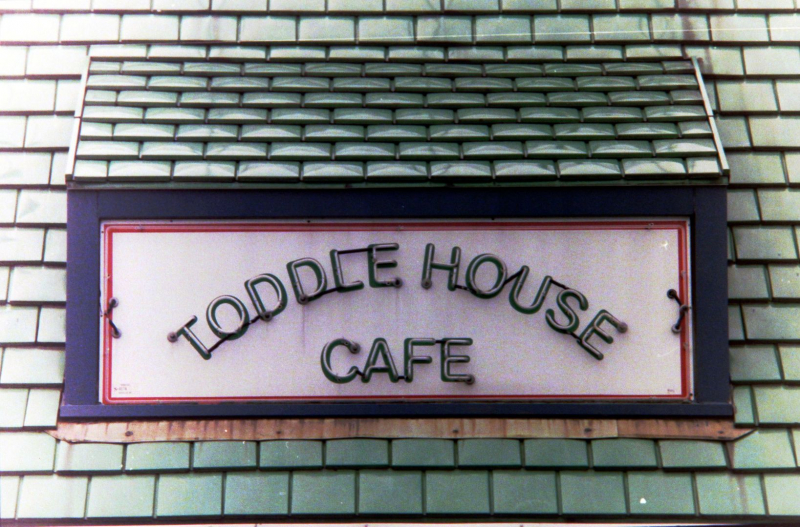
http://dinerhunter.com 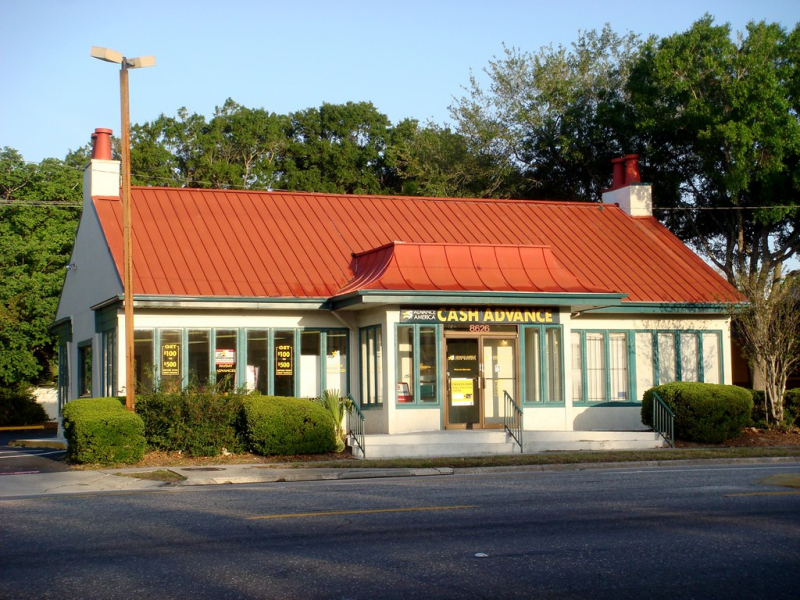
https://www.flickr.com -
When naming their new restaurant Sambo's in 1957, Sam Battistone Jr. and his business partner Newell Bohnett combined their nicknames Sam and Bo. The partners made use of The Story of Little Black Sambo, a children's book that was popular at the time, to promote their cuisine and decorate their restaurants. With the tigers in the tale chasing each other around a tree until melting into clarified butter as inspiration, the expanding chain established Sambo's Tiger Tamers, a club for kids, in the 1960s.
The brand, which prioritized breakfast meals and family-style dining, saw rapid growth throughout the 1960s and 1970s, peaking at 1,117 locations by 1979. However, the corporation is coming under increasing strain from both internal difficulties over its manager compensation program and external challenges over the racial imagery in its stores and name. The company had to rebrand a few stores as Jolly Tiger eateries after several cities refused to provide licenses to it because of its name. In 1979, the business changed its mind and either closed down the Jolly Tiger outlets or rebranded them Sambo's.
Some towns protested, boycotted, and took other activities against Sambo's locations. The chain filed for bankruptcy in 1981 as a result of internal financial problems and dwindling revenues. Additional attempts to rename other sites did not relieve the financial strains, and by the beginning of the 1980s all Sambo's Restaurants save for the original had closed. The name was finally changed to "Chad's" in 2020 as a result of local demand.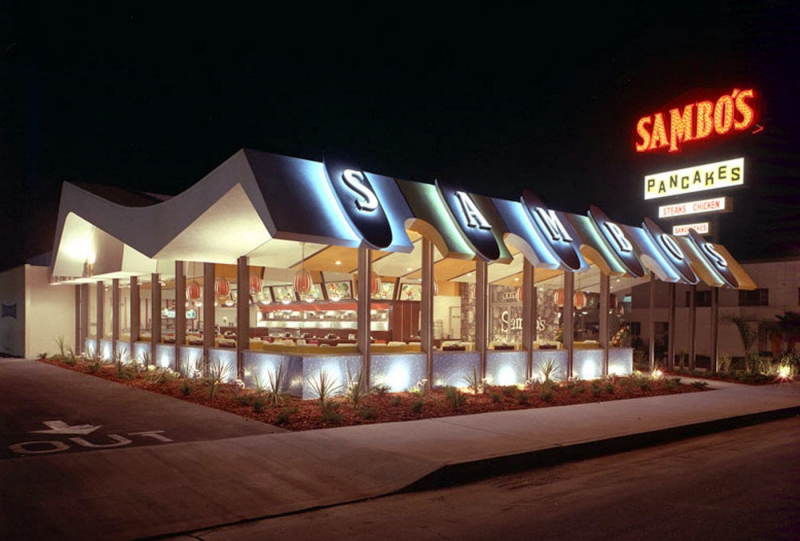
https://clickamericana.com 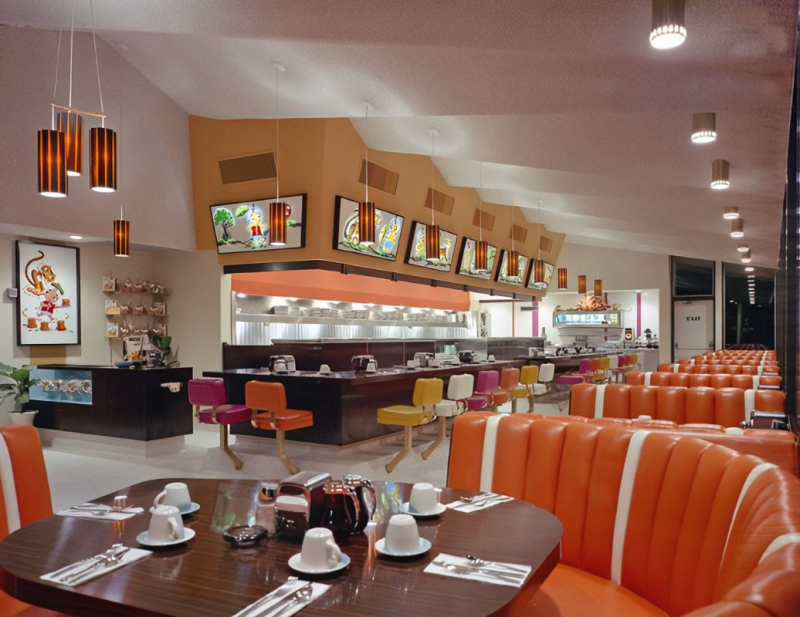
http://boingboing.net/ -
In 1925, a soda fountain in a local pharmacy in Quincy, Massachusetts, marked the beginning of Howard Johnson's. It was the biggest restaurant chain in the country by 1970. It provided casual dining, including its renowned fried clam strips, and 28 varieties of ice cream. It was easily recognized by its orange roofs, cupolas, and Simple Simon and the Pieman emblem. Although most restaurants were franchised separately by the middle of the 1960s, they nevertheless regularly operated alongside hotels with the same name.
The corporation acquired the rights to run eateries in turnpike rest areas in Connecticut, New Jersey, Pennsylvania, and Ohio in the 1940s and succeeding decades, giving them uncontested locations. In 1925, a soda fountain in a local pharmacy in Quincy, Massachusetts, marked the beginning of Howard Johnson's. It was the biggest restaurant chain in the country by 1970. It provided casual dining, including its renowned fried clam strips, and 28 varieties of ice cream. It was easily recognized by its orange roofs, cupolas, and Simple Simon and the Pieman emblem. Although most restaurants were franchised separately by the middle of the 1960s, they nevertheless regularly operated alongside hotels with the same name.
The corporation acquired the rights to run eateries in turnpike rest areas in Connecticut, New Jersey, Pennsylvania, and Ohio in the 1940s and succeeding decades, giving them uncontested locations. Although Howard Johnson's hotels continue to operate, the once-famous restaurant franchise is no longer in operation as of 2016, when the final authentic Howard Johnson's restaurant in Bangor, Maine, shuttered.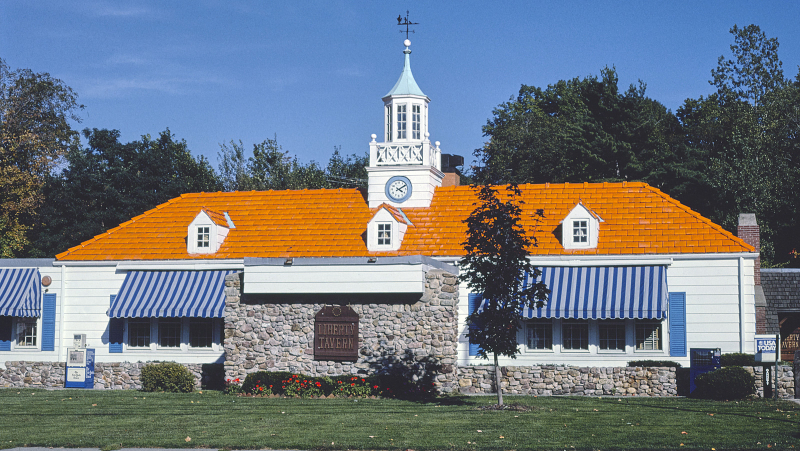
https://www.mashed.com/ 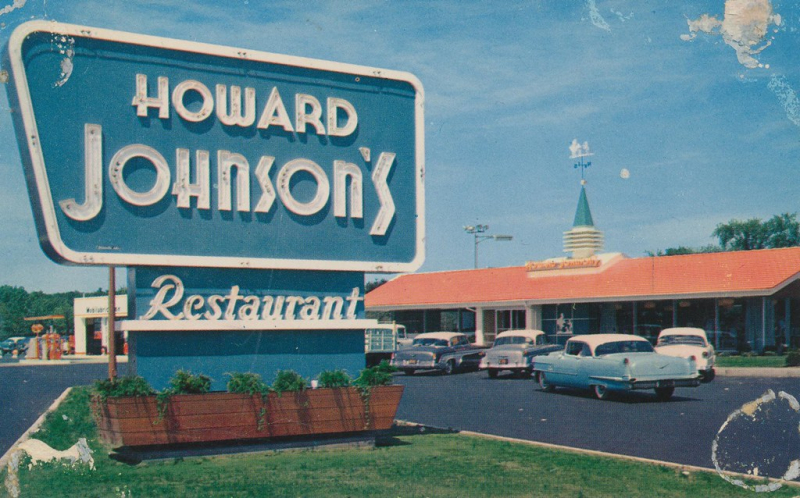
https://www.flickr.com/ -
In the 1970s and the beginning of the 1980s, Arthur Treacher, a British actor who specialized in butler parts in movies, gained the most recognition in the US as Merv Griffin's announcer and sidekick. He became a spokesperson for the restaurant chain bearing his name, although he never stated if he had a financial stake in it. By the late 1970s, the network had expanded to over 800 locations.
The brand was established in Columbus, Ohio, and was one of the first in the country to capitalize on the well-known British fast food fish and chips. Dave Thomas, who would later form Wendy's, was one of its founding members. The chain reached its pinnacle in 1979, contending for market share with Long John Silver's, Captain D's, and other restaurants. Their affiliation with Arthur Treacher offered them a competitive edge in advertising. A business executive asserted in 1975 that the actor invented the recipe for fried fish on his own.
Icelandic fish's price skyrocketed in the 1970s, therefore Arthur Treacher's switched out cod for pollock on its menus. The modification decreased quality, resulted in franchisee litigation, and decreased sales. After many ownership changes, the brand lost its prominence in the fast food sector. In Cuyahoga Falls, Ohio, there is still only one Arthur Treacher's restaurant open as of 2021. Arthur Treacher-branded fish and chips are available at a number of Nathan's Famous locations, however the formerly well-known chain is no longer in business.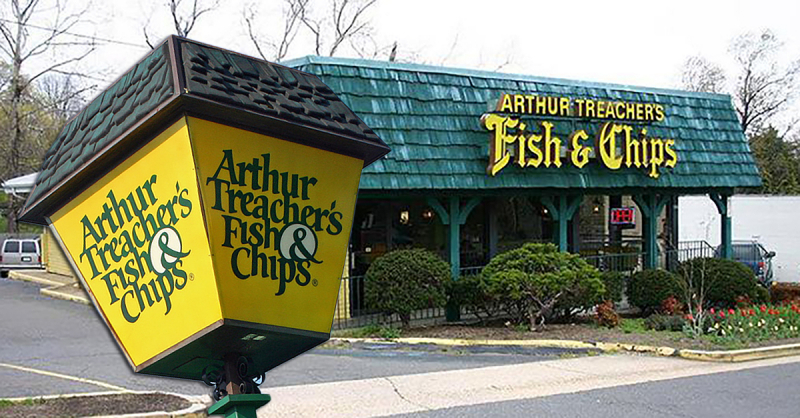
http://www.metv.com/ 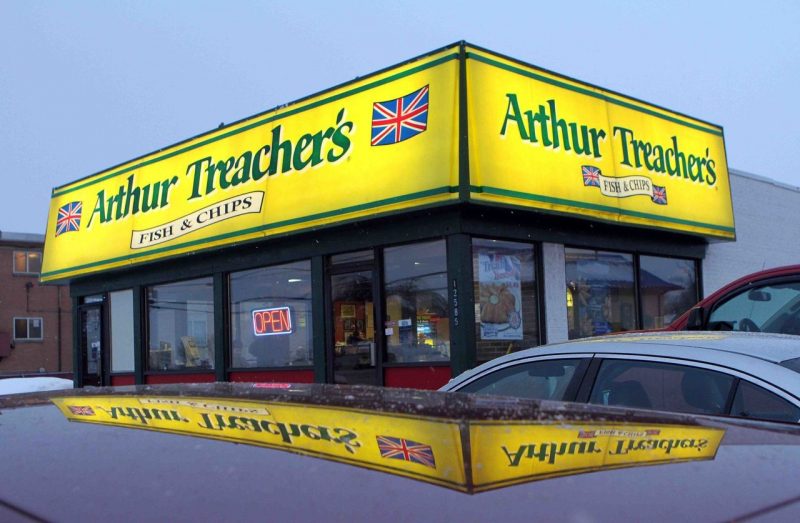
https://www.cleveland.com/













